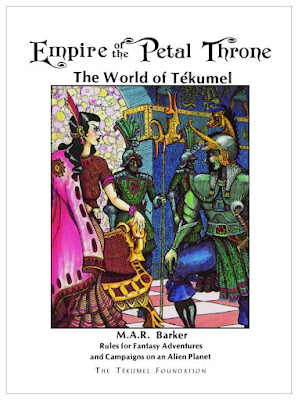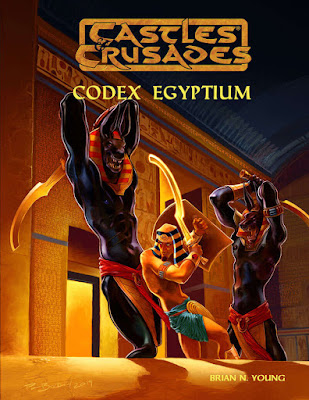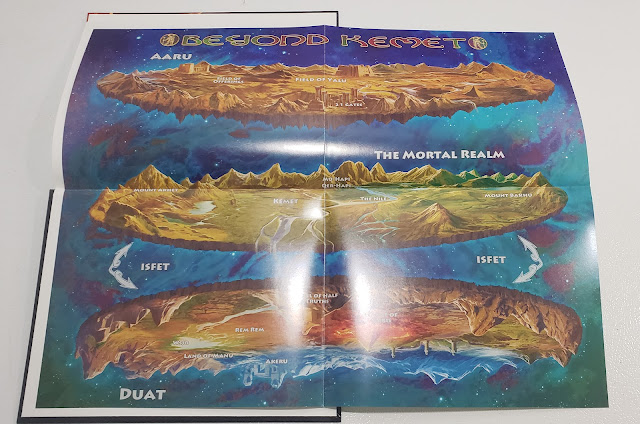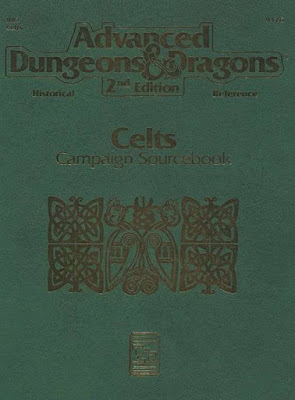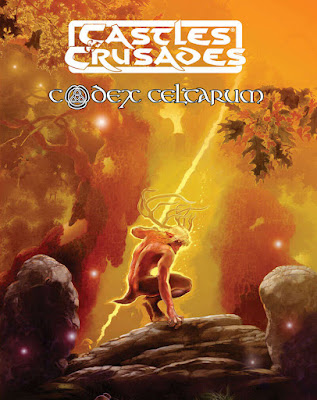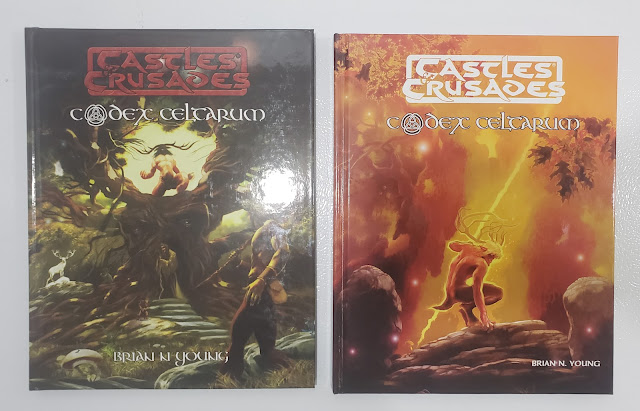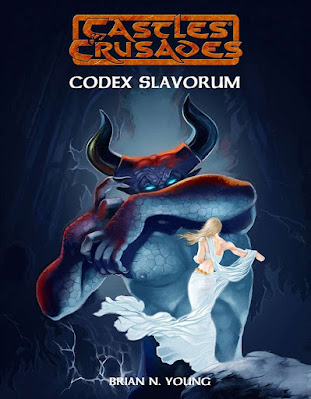Back in October of 2017 Troll Lords launched their Tome of the Unclean Kickstarter. With the idea to bring demons, devils, and other fiends to the Castles & Crusades game. It would also work with Amazing Adventures (which is what I would end up doing later). I was immediately hooked and knew I needed this book.
Fast forward to 2019 I got my book in the mail and I had been picking up the PDFs (they released as they were completed starting in Jan 2018) all throughout.
I have just been really slow at getting my review up.
For this review, I am considering both the hardcover print version from the Kickstarter and the now final PDF from DriveThruRPG.
144 pages. Color covers, black & white interior art.
The book follows a format that is now common to many books about fiends. A part that deals with Demons and Lords of the Abyss. Another that covers Devils and the Legions of Hell. And a third, which often differs from book to book, covers other fiends of Gehenna and the Undead. Adding in the undead is a nice touch in my mind and a value add for the book.
Demons & Devils
This covers the basic differences and how these creatures fit into the World of Aihrde, the game world of Castles & Crusades. It also covers the basics of the monster stat block.
Lords of the Abyss
This is our section about Demons and the Abyss. It cleaves pretty close to the AD&D standard with what I often refer to as "the Usual Suspects," so all the "Type" demons and succubi. The new material here includes Abyssal Oases which are areas that are habitable by mortal-kind that seem to come up at random.
Covered here are also traits about the Abyss and powers and traits common to all demons.
The monsters are all alphabetical, so common demons are not separated from the lords. There are a few lords present. Demogorgon and Orcus return. But also Oozemandius (as a Juiblex stand-in) and Buer. Graz'zt is mentioned a few times, but no stats are given. There are 32 total demons with four as lords.
Legions of Hell
This section follows a pattern similar to the Demons one. The Hells are described, including the nine layers. They have some new names and some differences, but if you are wed to the Ed Greenwood Dragon articles about Hell then there is not a lot to convert here.
There are 53 devils, with 16 of these listed as unique Arch-Devils. There are more new devils here than there are new demons.
Gehenna
This is our "Neutral Evil" plane in the Great Wheel cosmology of the world of Aihrde, taking the place of Hades or the Grey Wastes from AD&D. This is home to the daemons. Like the previous chapters, this covers the features of the land and it's inhabitants. Reading through it is feels like equal parts of the Greek Hades and the Underworld of Kur in the Babylonian myths where Ereshkigal rules.
Only four deamons are detailed here, with one, Charon the Boatman, as the only unique member.
Undead
The name of the book is the Tome of the Unclean. While demons and devils take up the vast majority of the book there is still some space for the Undead.
18 undead creatures are detailed here, most of favorites (but creatures Vampires are missing) and some new ones.
Denizens. Fauna, & Flora
Covers various types of evil, non-fiendish, non-undead, monsters that can also be found.
We end with Aihrde specific information and our OGL page.
Tome of the Damned is a fantastic resource for anyone wanting more information on demons, devils, and their ilk for anyone playing Castles & Crusades. In fact, if you are playing C&C and want demons then this is a must-have book.
The advantage of Castles & Crusades is that it can be adapted to AD&D or any OSR game easily. So if you want more than what the Monster Manuals I & II can give you, then this book is also a good choice. I f you are playing AD&D 2nd ed then this book will fill in many of the gaps left by that game.
Now, I have an entire library of books dedicated to demons, devils, and all sorts of evil monsters. There were only a few things here actually new to me. But I still rather enjoyed this book quite a lot. It is a good addition to my Castles & Crusades library.








